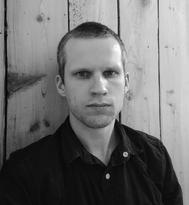Graden avlegges ved Universitetet i Sørøst-Norge (USN), Fakultet for teknologi, naturvitenskap og maritime fag.
Eivind Bardalen
 Eivind Bardalen has a master in physics from University of Oslo. He developed his Ph.D. work at the Department of Microsystems at the University College of Southeast Norway in collaboration with Justervesenet, Kjeller. In addition, Physikalisch-Technische Bundesanstalt (PTB), Germany and National Physical Laboratory (NPL), UK were involved in the project.
Eivind Bardalen has a master in physics from University of Oslo. He developed his Ph.D. work at the Department of Microsystems at the University College of Southeast Norway in collaboration with Justervesenet, Kjeller. In addition, Physikalisch-Technische Bundesanstalt (PTB), Germany and National Physical Laboratory (NPL), UK were involved in the project.
Om avhandlingen/About the thesis
Superconducting electronics are operated at very low temperatures, typically by cooling with liquid helium, which has a boiling point of 4 K (– 270 °C). At these temperatures, a significant challenge is to avoid high mechanical stresses between the different components in the electronic packaging.
In this study, an optoelectronic module was developed and demonstrated to have reliable performance at 4 K. The module consists of multiple photodiodes with optical fiber attachments. To minimize the mechanical stresses in the assembly, thermomechanical simulations were performed to evaluate the suitability of various components and materials. In addition, assembly techniques were developed to enable precise optical fiber attachment.
The optoelectronic module was developed as part of European research projects Q-WAVE and QuADC. In these projects, the overall goal was to develop improved techniques for measuring AC voltage waveforms utilizing the Josephson Arbitrary Waveform Synthesizer (JAWS) technique. This method is based on superconducting Josephson junction arrays, which use high frequency current pulses to generate quantum-accurate voltage waveforms.
By using an optically controlled current source, the performance of JAWS is expected to improve significantly. In the research, it was shown that the photodiodes cooled to 4 K operated with good frequency response up to 13 GHz modulation.